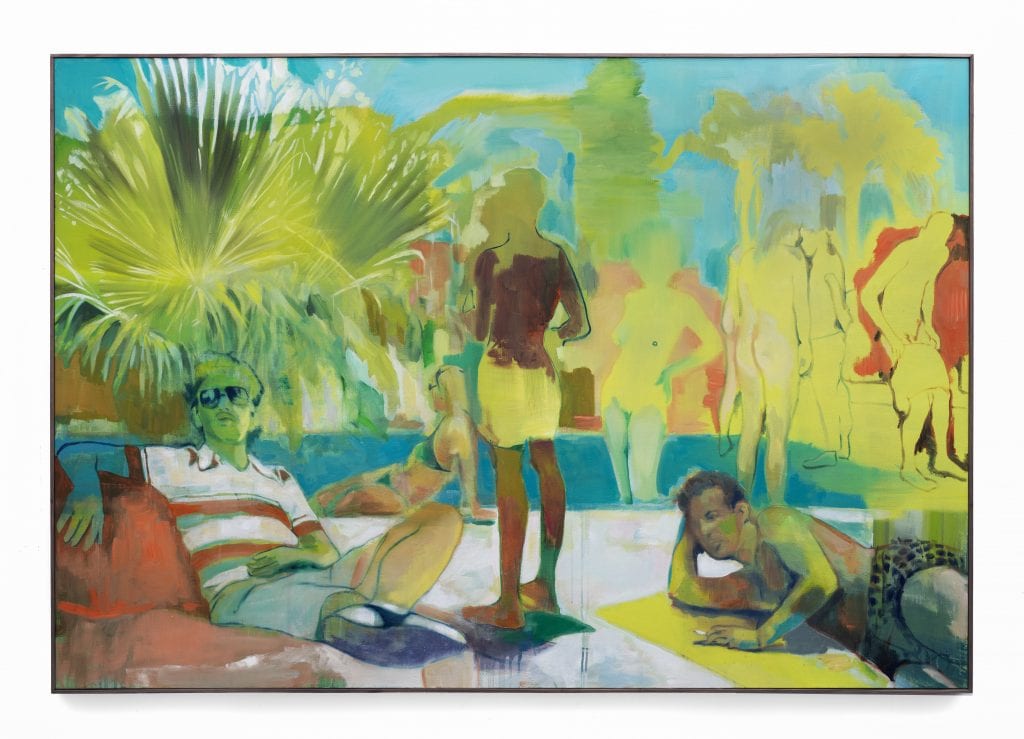While Kate Gottgens has exhibited around the world, her works still maintain a certain excitement in the everyday. She creates this feeling by painting scenes featuring an unexpected perspective, or through a curious addition to an otherwise normal tableau. Her works have an ephemeral nature- almost as if they could change at any moment and the setting beyond would continue to play out in its own world. Are we intruding on her world, or simply lucky enough to glimpse a moment in the quotidian? Gottgens’ interior and backyard narratives, painted in simultaneously vibrant and muted colors, with flattened or altered space, push home this idea of being a bystander in a scene about to go awry.
Tell us a little bit about yourself. Where are you from originally and when did art first enter your life?
I am South African, living and working in Cape Town. I was a shy and awkward teenager and art seemed to hold a key to a symbolic language that expressed the unsayable, like seeing a part of myself that was invisible.
Has your work always taken on the style it currently embodies?
For a few years I experimented with abstraction, and I like to still occasionally push the boundaries between figuration and abstraction in a painting, but mostly my work has had the style it currently embodies.
Courtesy of SMAC Gallery
What’s a day in the studio like for you?
I am in my studio from early morning with my first cup of coffee, until early evening every day of the week, and intermittently on the weekend. It’s a large converted shed in my garden that’s quiet, light filled and has no wi-fi signal which is a happy curse as it allows me to paint uninterrupted by other distractions.
What is your process like? How do you begin a work?
A white canvas can be intimidating, or off- putting so I prepare a few canvases in advance and have them ready in my store. They are painted with an abstract field of colour and left to dry, then when I have an idea of something I want to paint I select a particular surface I want to respond to. I work with several references in mind on a single work and it’s the improvisation of many elements that is the exciting part of the process.
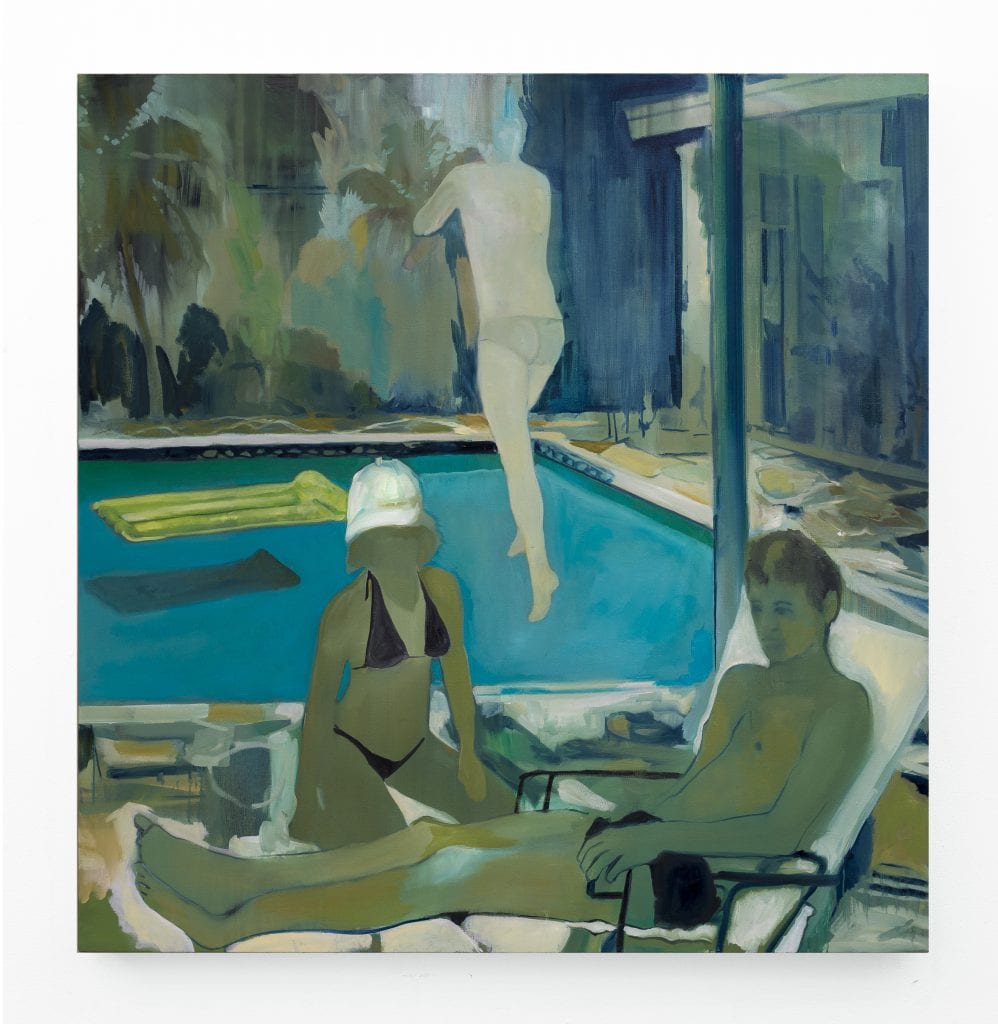
Courtesy of SMAC Gallery
From where do you draw inspiration?
It’s hard to pin down what inspires me: art, films, photographs, history, memories, life events all play a part; but perhaps it’s the sheer pleasure and challenge of painting, the exploration and freedom the process offers that keeps me going back.
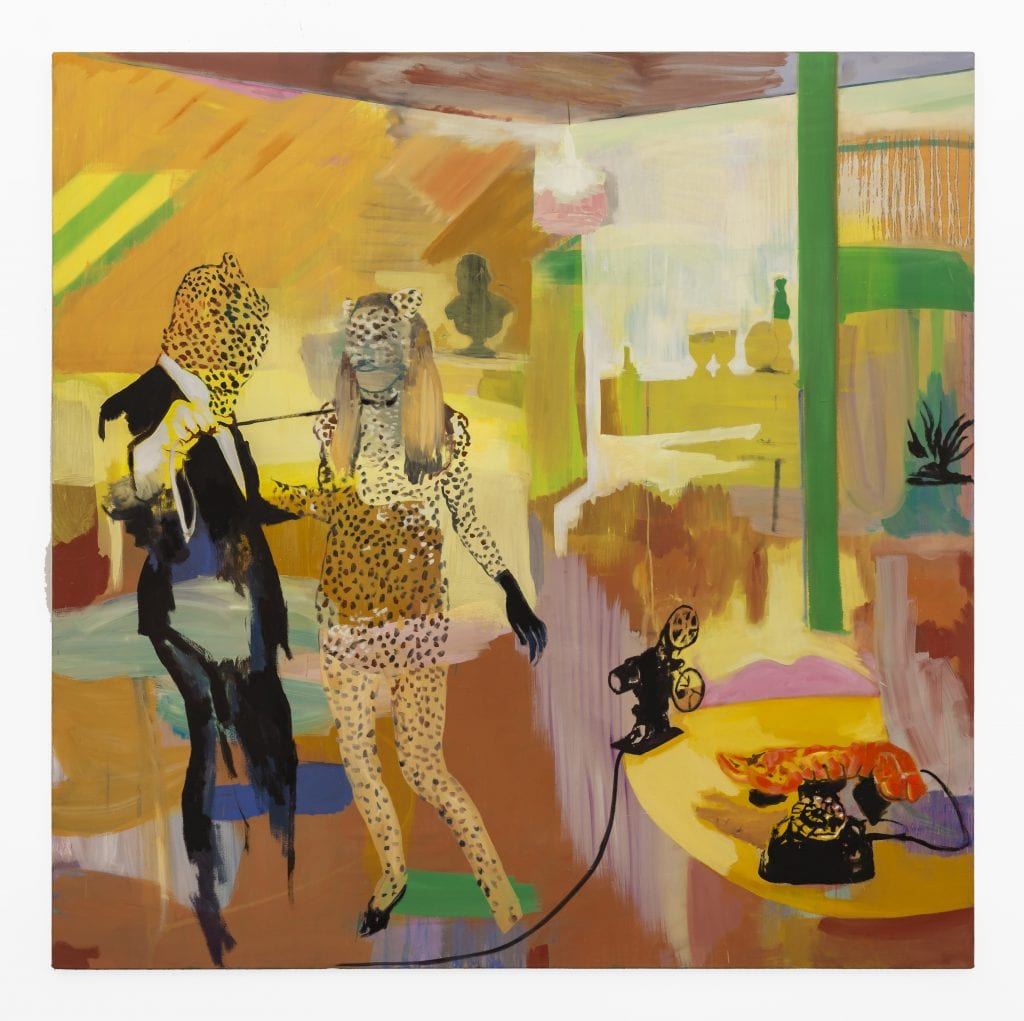
Courtesy of SMAC Gallery
How do you come to title your works?
I find titles in reading, especially poetry and song lyrics. Sometimes a refrain or phrase comes subliminally while working, and the words align with the painting.
What source material do you base your work off of?
I use photographs, mostly ‘found’ ones. I search for old, discarded vernacular photographs and slides long forgotten by the original owner. I also use ready made images from vintage magazines and pulp fiction.
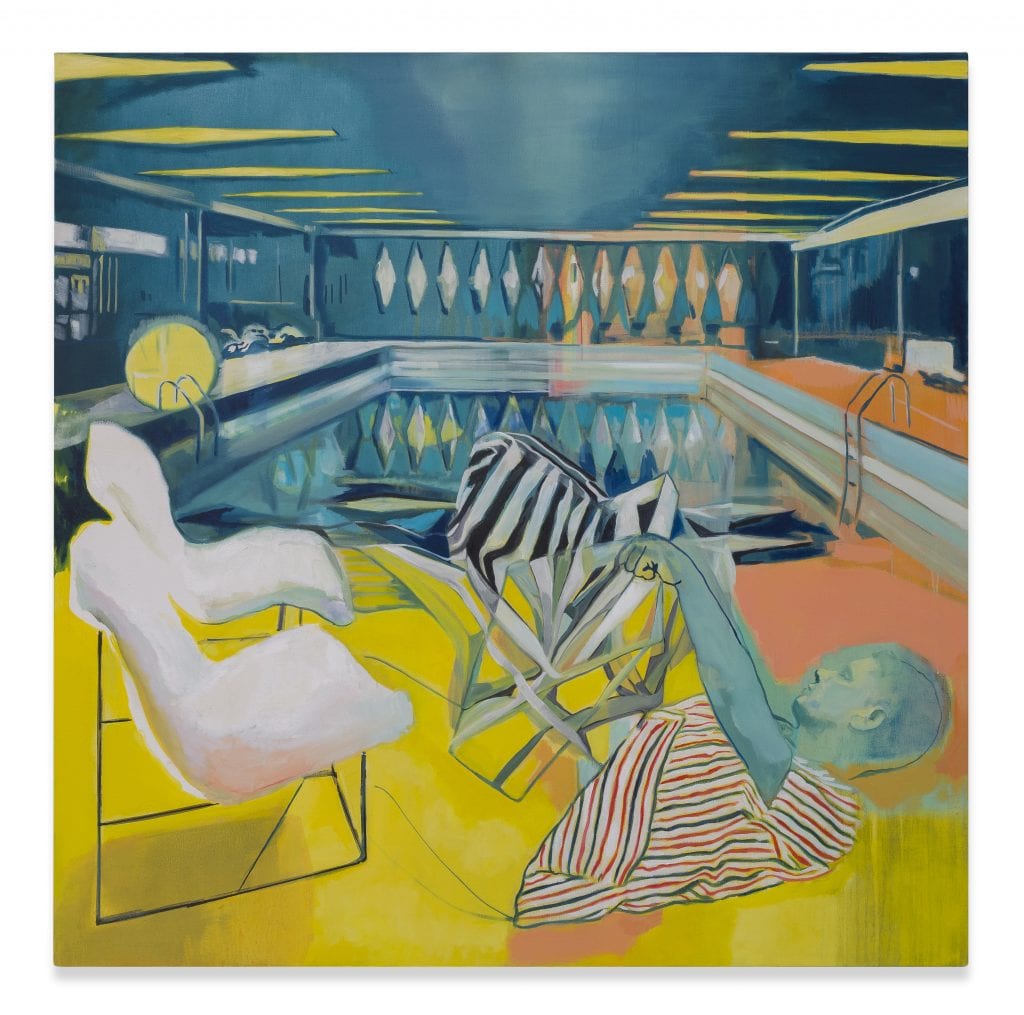
Courtesy of SMAC Gallery
Does your work reference any Art Historical movements?
Late Pop has influenced my style, I think, as I love the work of Hockney, Kitaj , Bowling and Bacon from the 196Os and 70s. Recently I’ve become interested in quoting and appropriating elements from Art history, a deliberate intertextuality, starting by making paintings that borrow Surrealist imagery.
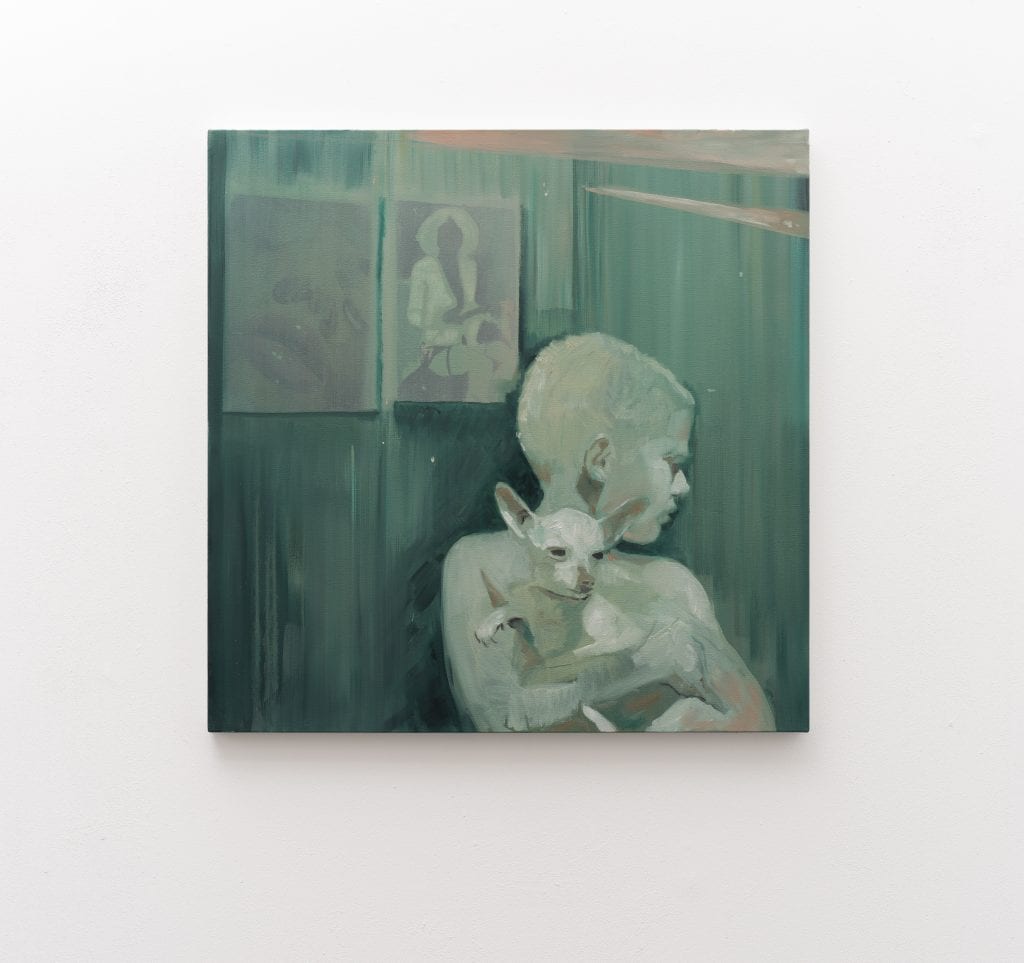
Courtesy of SMAC Gallery
On your website it says you are represented by galleries in Spain, Belgium and South Africa. Why and how do you have such an international reach?
I had shows with these European galleries as a result of being included in a Thames and Hudson publication ‘ A Hundred Painters of Tomorrow’ (pub 2014). Also my South African gallery, SMAC Gallery is active in the international Art Fair scene and has given me solo booths at Sydney Contemporary and Miami Untitled and included my work in the MIART and Artissima Fairs.
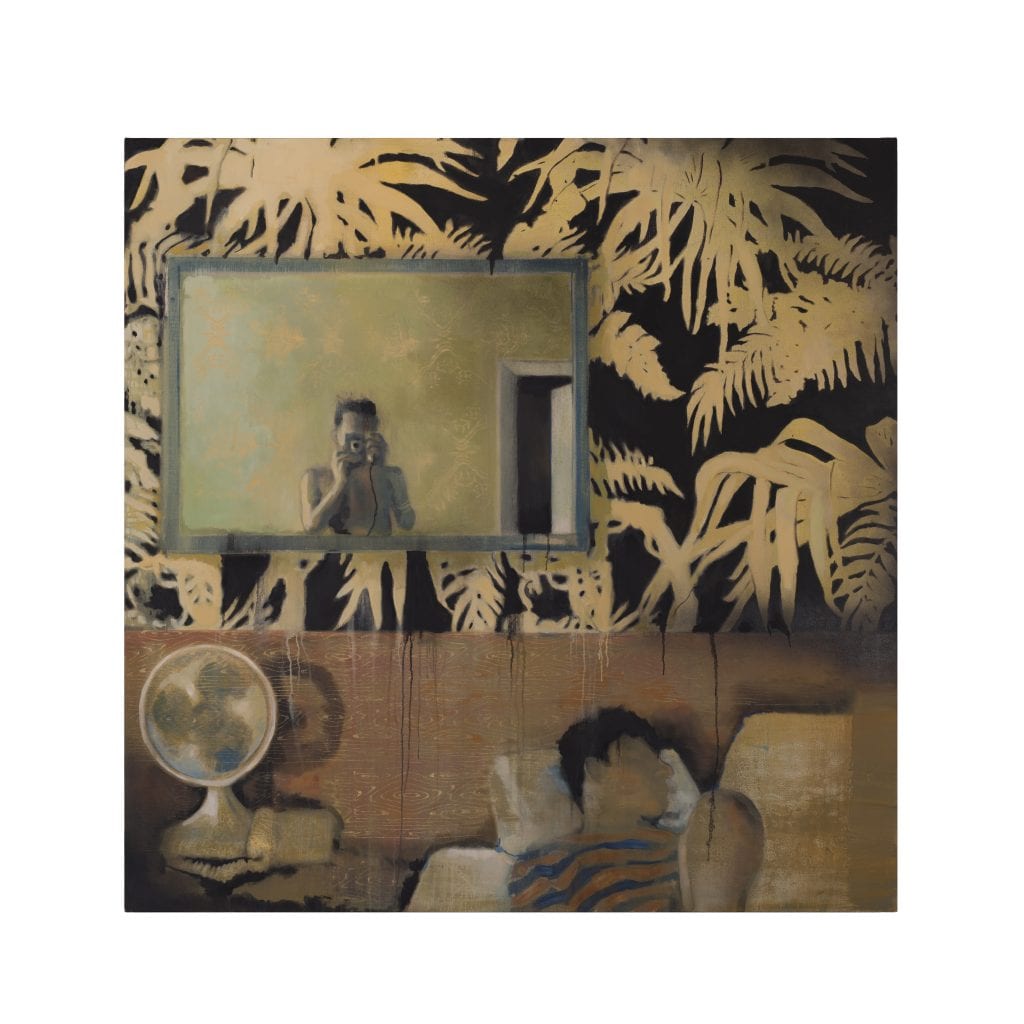
Courtesy of SMAC Gallery
What’s next for you?
Next for me is the Investec Cape Town Art Fair, this February, which is an important African art fair with 60 foreign galleries participating. And a solo show later in the year in Cape Town with SMAC Gallery.
At the end of every interview, we like to ask the artist to recommend a friend whose work you love for us to interview next. Who would you suggest?
